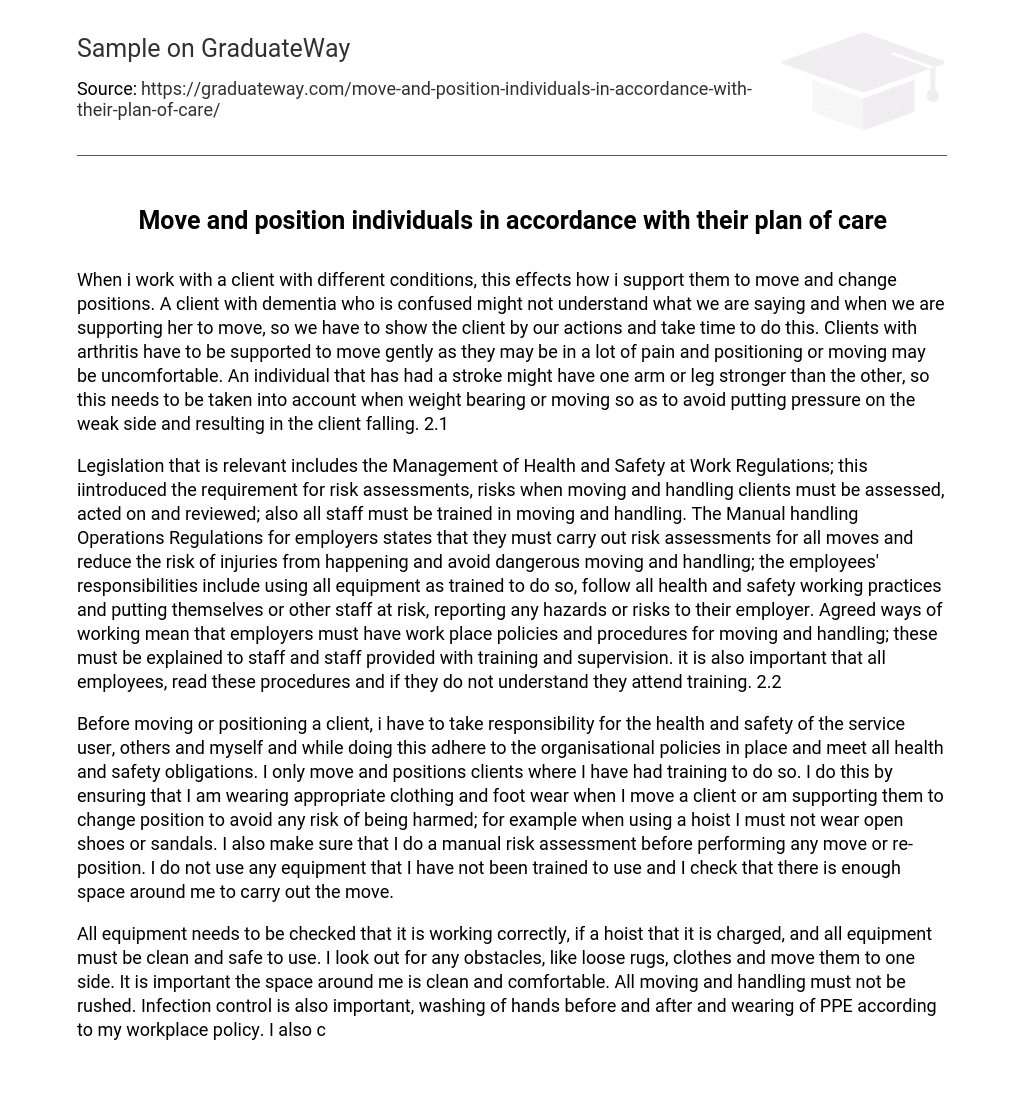When working with clients who have different conditions, it affects how I support them in their movements and changing positions. For example, a client with dementia may not understand verbal instructions, so it is important for me to demonstrate through my actions and be patient with them. Clients with arthritis require gentle support during movement as they may experience pain or discomfort. Additionally, clients who have had a stroke may have one side of their body weaker than the other, which means I need to be mindful of weight-bearing and movements to prevent falls or added pressure on the weaker side. 2.1
Legislation that is relevant includes the Management of Health and Safety at Work Regulations. This legislation introduced the requirement for risk assessments. Risks when moving and handling clients must be assessed, acted on, and reviewed. Additionally, all staff must be trained in moving and handling. The Manual Handling Operations Regulations for employers states that they must carry out risk assessments for all moves. Their responsibility is to reduce the risk of injuries and avoid dangerous moving and handling. Employees have responsibilities too. They must use all equipment as trained, follow health and safety working practices, and not put themselves or other staff at risk. If they notice any hazards or risks, they must report them to their employer. Agreed ways of working mean that employers must have workplace policies and procedures for moving and handling. These policies and procedures should be explained to staff, who should also receive training and supervision. It is important for all employees to read these procedures. If they don’t understand, they should attend training (2.2).
I have a responsibility to prioritize the health and safety of the service user, as well as others and myself, when moving or positioning a client. It is important for me to follow my organization’s policies and meet all health and safety requirements. I will only handle clients’ movements if I have received the necessary training. To ensure safety, I will wear appropriate clothing and footwear, avoiding open shoes or sandals when using a hoist. Before starting any movement, I will assess the risks manually and avoid using equipment that I haven’t been trained on. Additionally, it is crucial to make sure there is enough space available for carrying out the move.
Regular checks should be conducted to ensure the safety and functionality of all equipment, including verifying the charge of a hoist if applicable. It is crucial to also verify that all equipment is clean and in proper working condition. Surveying the environment for potential obstacles such as loose rugs or clothing and relocating them is vital. Maintaining a clean and comfortable space is essential. Moving and handling should not be rushed, while following infection control protocols by washing hands before and after handling equipment and wearing personal protective equipment according to workplace policies are vital.
Consulting with the client regarding their specific needs and preferences, comparing them against their care plan, obtaining their agreement prior to proceeding with any movement are necessary steps. Utilizing appropriate equipment that aligns with the client’s requirements, ensuring its cleanliness and safety are equally important. Afterwards, storing the equipment securely must be done to prevent accidents or improper use. It is also important to consider whether the client will retain their arms in the sling or may choose otherwise or experience anxiety during movement.





